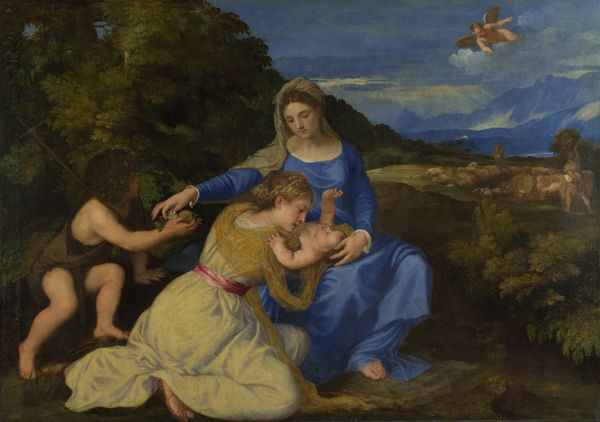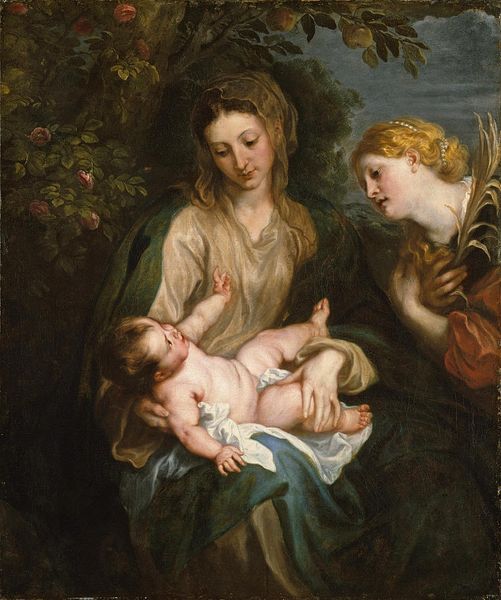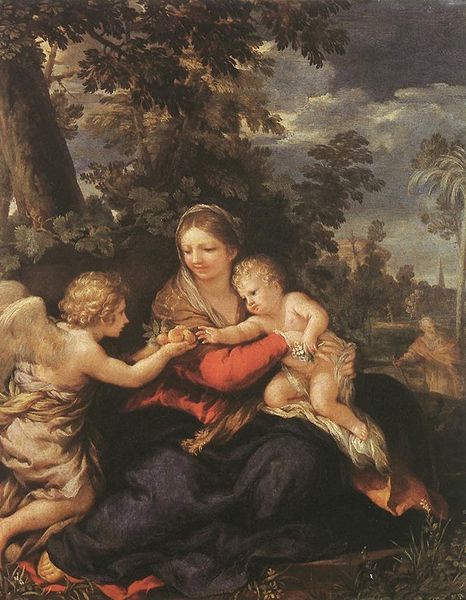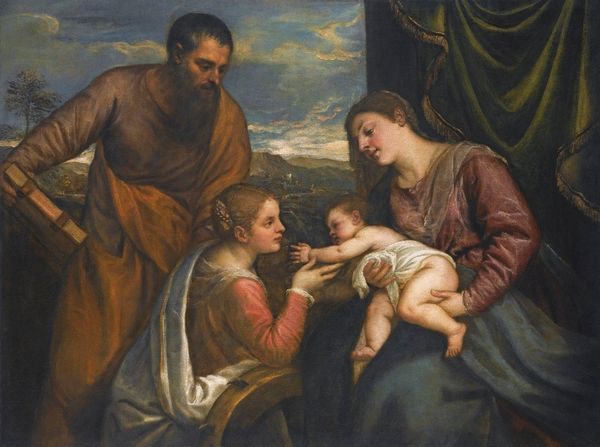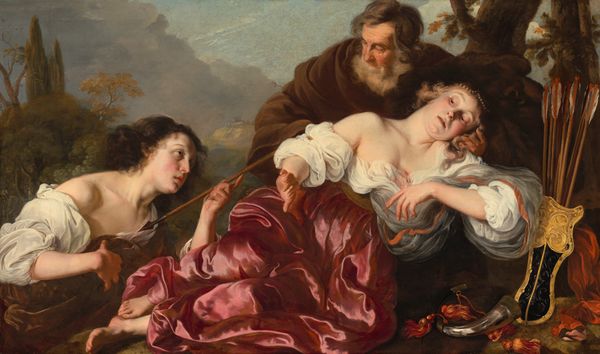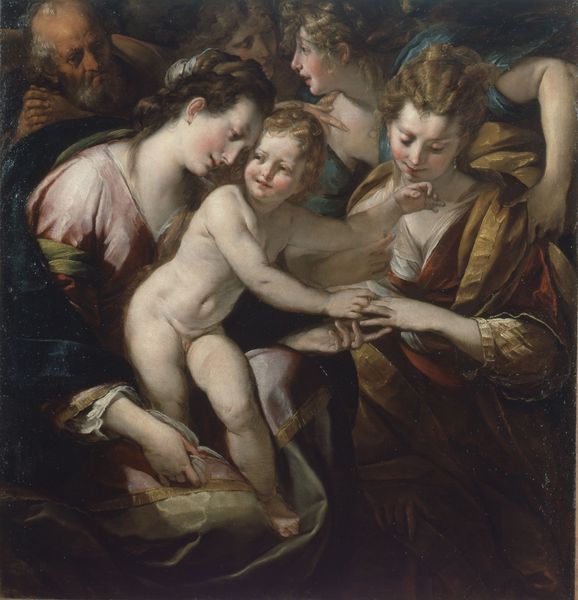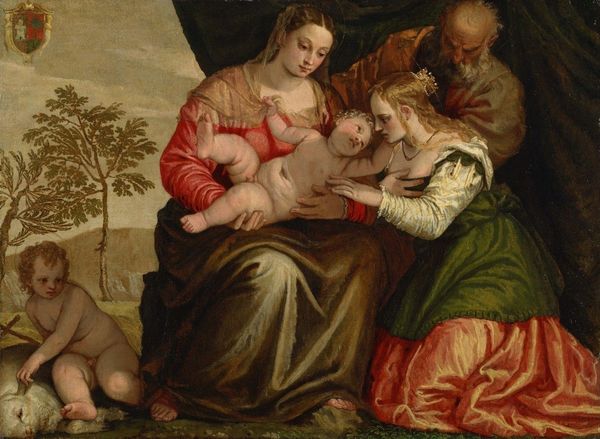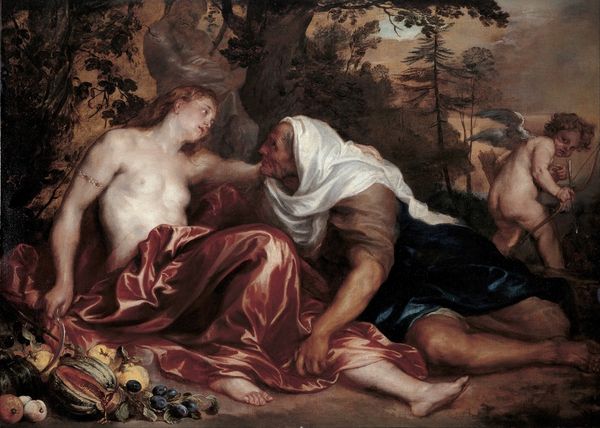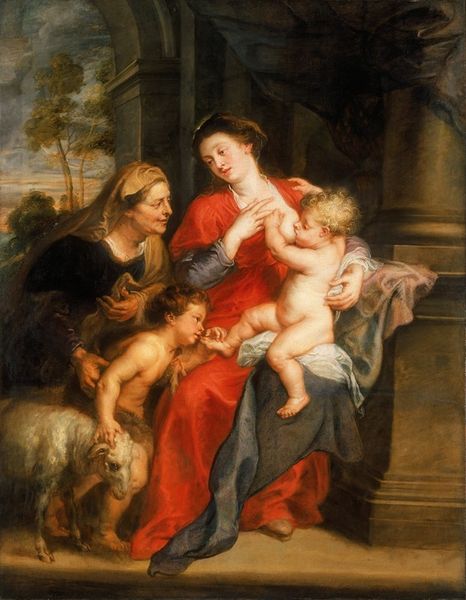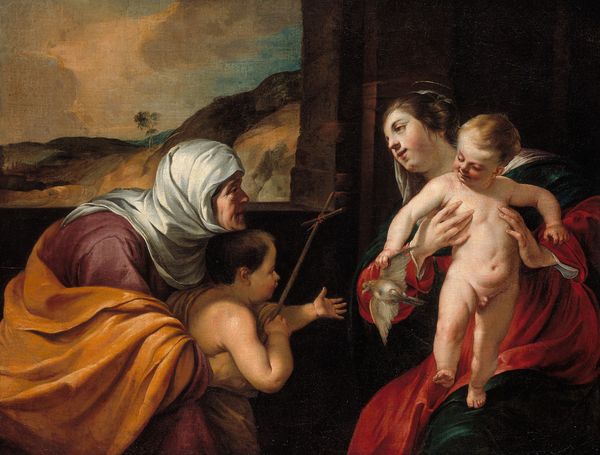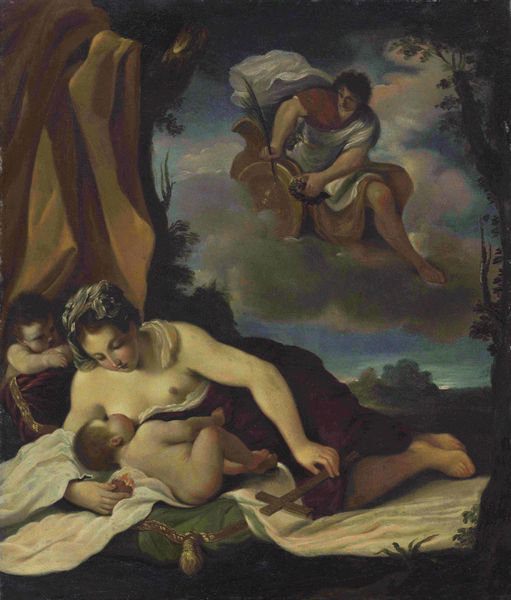
oil-paint
#
portrait
#
high-renaissance
#
oil-paint
#
landscape
#
figuration
#
oil painting
#
child
#
christianity
#
italian-renaissance
#
christ
Dimensions: 105.4 x 148.3 cm
Copyright: Public domain
Curator: So, what jumps out at you about Titian’s "Virgin and Child with Saint and Saint John," created around 1530? Editor: It's striking! The figures feel so weighty, and the landscape has this almost melancholic tone. What’s fascinating is how the artist worked with oil paint on canvas; how did Titian’s materials affect the experience he aimed to evoke? Curator: Good eye! Let’s focus on that very point. Titian's use of oil, specifically, its availability, cost, and ease of manipulation in 16th century Venice enabled him to develop complex layering techniques. Do you see how the surface quality contributes to our sense of depth? Editor: Absolutely, you can almost trace the application of the paint. How the fabrics are depicted stands out - Mary’s dark, voluminous mantle with the creamy white wrap has a completely different texture to the saint’s flimsy sleeve. Is it that emphasis on texture intentional? Curator: Certainly. Renaissance artists like Titian pushed oil paint's capacity for rendering different materials convincingly, thus elevating painting in status closer to sculpture as if crafting different types of reality within the picture frame. This wasn’t just artistic skill, it reflects on the societal value and labor attached to the very materiality being represented - think the trade and manufacture that facilitated luxurious fabric or mineral rich pigments that coloured them. Can you observe that in other ways too? Editor: You can even tell the relative coarseness of John’s attire compared to the softness of Mary’s fabrics - amazing that even through this scene of supposed divine intimacy, class can still be communicated so evidently! Thanks for pointing out the material reality underlying it all. Curator: Exactly! Thinking through the material conditions really allows us to reconsider conventional understanding around artistic mastery of form, composition, and so forth.
Comments
No comments
Be the first to comment and join the conversation on the ultimate creative platform.
